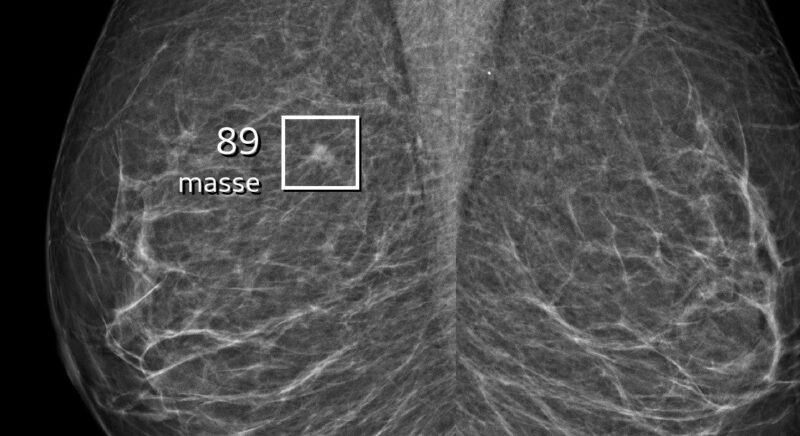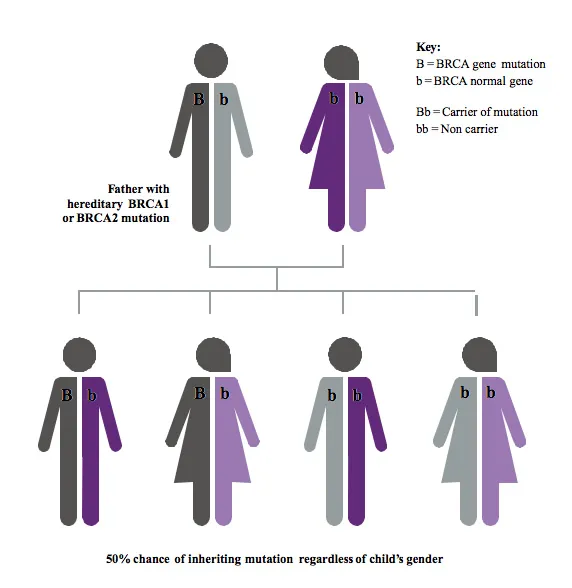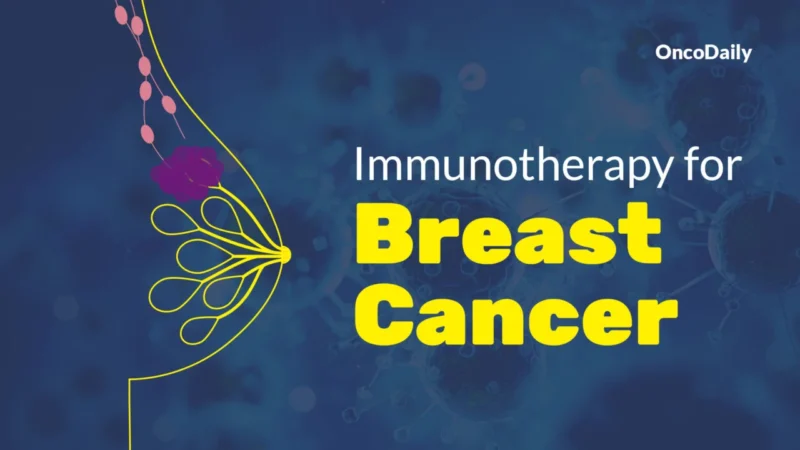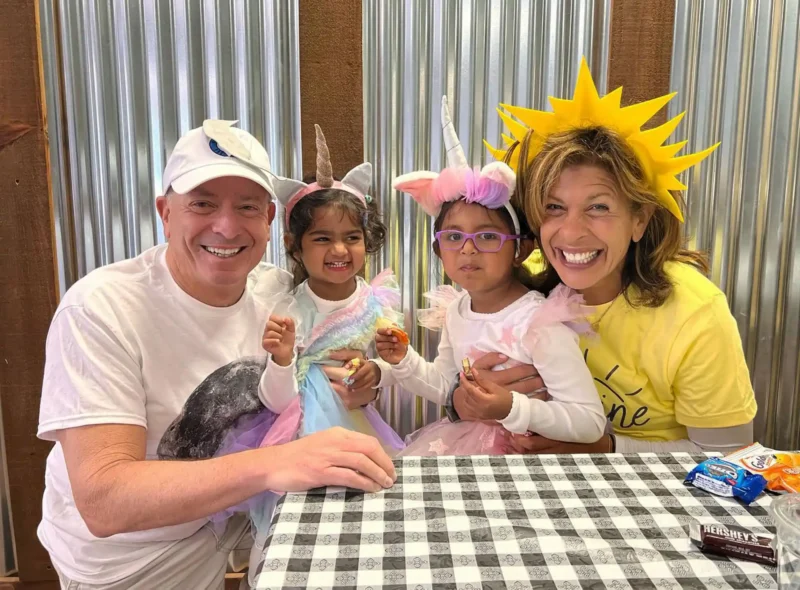Hoda Kotb is a prominent television personality best known as a co-host of NBC’s “Today” show. Her career spans over two decades in journalism, where she has garnered acclaim for her engaging interviewing style and empathetic storytelling. In 2007, Kotb was diagnosed with breast cancer, which led to her undergoing a mastectomy and subsequent treatments. Her openness about her battle with cancer has significantly influenced public awareness, encouraging discussions about early detection and the importance of regular screenings.

Hoda Kotb on NBC’s Today show in 2022. She joined Today in 2007. Charles Sykes/Invision/AP
How Did Hoda Kotb Get Diagnosed with Breast Cancer?
Hoda Kotb’s breast cancer diagnosis came unexpectedly, but it was discovered during a routine mammogram, a key reminder of the importance of regular screenings. At the time, she had no noticeable symptoms or warning signs of the disease. However, the mammogram revealed an early-stage tumor, which allowed for prompt and effective treatment.
The circumstances of Hoda Kotb’s diagnosis underscore the critical importance of early detection through regular screenings. Routine mammograms can identify breast cancer at its earliest stages, significantly improving treatment outcomes. For example, studies indicate that the 5-year survival rate for localized breast cancer is nearly 99%, compared to only 29% for later-stage diagnoses (American Cancer Society, 2024). Regular screenings can reduce breast cancer mortality by approximately 15-30% among women aged 40-74 (U.S. Preventive Services Task Force, 2016), highlighting how essential it is for women to prioritize their health through consistent screening practices. Hoda’s experience serves as a powerful reminder of the necessity for early detection in improving outcomes and saving lives.
Symptoms
She had no noticeable signs or warning signals of the disease, such as lumps, pain, or changes in her breast tissue. It was only through a routine mammogram that her cancer was detected at an early stage.
Breast cancer can develop silently, without symptoms, particularly in its early stages. Many women do not experience any symptoms until the cancer has progressed, which is why regular mammograms are so crucial. Routine screenings allow healthcare providers to detect cancer before it becomes noticeable, leading to earlier, more effective treatment and significantly improving outcomes.Hoda’s experience reinforces the message that even if a woman feels healthy and has no symptoms, routine mammograms are essential for early detection.
The most common symptoms of breast cancer include
- Lumps in the breast: A hard, painless lump or a change in the texture or size of the breast tissue.
- Changes in the skin: Skin redness, puckering, or dimpling that resembles the texture of an orange peel.
- Nipple changes: Nipple inversion (turning inward), discharge (other than breast milk), or unusual tenderness.
- Pain: Unexplained pain in the breast or nipple, though pain is less common in early-stage breast cancer.
- Swelling: Swelling or lump in the armpit, which may indicate cancer spread to nearby lymph nodes.
It’s important to note that these symptoms can also be caused by non-cancerous conditions, so any changes should be discussed with a healthcare provider for proper evaluation and diagnosis. Regular screenings remain essential for detecting breast cancer in its earliest and most treatable stages. According to American Cancer Society. Breast Cancer Symptoms. 2024.
What Were Hoda Kotb Initial Reactions to His Diagnosis?
Hoda Kotb’s emotional and mental reaction to her breast cancer diagnosis was marked by a mixture of fear, determination, and resilience. Upon receiving the news, she expressed feelings of disbelief and anxiety, stating in an interview, “I was scared. I was worried about my kids and what would happen to them.” This quote illustrates the immediate fears that many individuals face when confronted with a cancer diagnosis, particularly regarding their loved ones.Despite her initial fears, Kotb demonstrated remarkable determination throughout her journey. She emphasized the importance of maintaining a positive outlook and staying proactive about her health. In an interview with People, she shared,
“I knew I had to fight this. I wanted to be there for my girls.”
This determination not only fueled her personal battle but also inspired others facing similar challenges.
What was the Prognosis?
When breast cancer is diagnosed at an early stage, the prognosis is typically very favorable. Early-stage breast cancer usually refers to stage 0 (ductal carcinoma in situ) or stage 1, where the cancer is confined to the breast and has not spread to lymph nodes or other parts of the body. In these cases, the 5-year survival rate can be nearly 100% (American Cancer Society, 2024).
Even in more advanced early stages, such as stage 2, where the cancer may have spread to nearby lymph nodes but is still localized, the survival rate remains high—around 93-98% (American Cancer Society, 2024). An estimated 287,850 new cases of invasive breast cancer will be diagnosed in women in 2024. In addition, about 51,400 cases of non-invasive (in situ) breast cancer are expected to be diagnosed (American Cancer Society, 2024).
What Treatments Did Hoda Kotb Undergo?
After being diagnosed with breast cancer, she underwent a mastectomy, which was a significant step in her fight against the disease. Following the surgery, Kotb faced various challenges both physically and emotionally.Physically, she dealt with the recovery process from surgery, which included pain and adjustments to her body image. Emotionally, Kotb experienced a range of feelings, from fear and anxiety about her health and future to determination to overcome the illness. In interviews, she expressed her fears regarding the impact of her diagnosis on her family, particularly her children, stating that she wanted to be there for them.
Surgery and Recovery
Hoda Kotb was diagnosed with breast cancer in 2007 and underwent a mastectomy as part of her treatment plan. The surgery involved the removal of the tumor along with surrounding breast tissue to eliminate cancerous cells and reduce the risk of recurrence. A mastectomy is a common surgical option for breast cancer patients, particularly those diagnosed at an early stage or those with a family history of the disease.
There are several types of mastectomies, including the total (or simple) mastectomy, which removes the entire breast, and the modified radical mastectomy, which also removes some lymph nodes. In some cases, women may opt for a double mastectomy to reduce the risk of cancer in the opposite breast, especially if they carry a higher genetic risk. The decision to undergo a mastectomy depends on factors such as the type and stage of cancer, personal and family medical history, and individual preferences.
For Hoda, this surgery was a critical step in her journey toward recovery, and it also played a role in raising awareness about breast cancer treatment and the importance of early detection.
How Did Hoda Kotb Overcome Breast Cancer?
Hoda Kotb demonstrated remarkable resilience throughout her breast cancer battle, maintaining both emotional and physical strength despite the challenges she faced. Her work as a journalist played a crucial role in helping her stay focused during this difficult time. By continuing to engage with her audience on the Today show, Kotb found purpose and motivation, which helped her cope with the emotional toll of her diagnosis.In interviews, she expressed how her career provided a sense of normalcy and distraction from her health struggles. Kotb stated, “I had to keep going; I had to keep working,” emphasizing how her professional responsibilities kept her grounded.
Support from Family and Friends
Hoda Kotb’s journey through her breast cancer diagnosis was significantly supported by her family, friends, and colleagues, who provided crucial emotional backing during her treatment. In interviews, Kotb has often highlighted the importance of her support network in helping her maintain a positive outlook. She shared that her partner, Joel Schiffman, and her daughters were instrumental in keeping her spirits high. For example, she mentioned how her daughters would draw pictures and write notes to encourage her during treatment, saying, ”
“Their love and support made all the difference.”
Kotb also expressed gratitude for the support she received from her colleagues at the Today show. She recalled moments when they rallied around her, providing both emotional support and a sense of normalcy amid the challenges of her diagnosis. In one interview, she stated, “My coworkers were amazing; they kept me laughing and focused on my work, which helped me cope.”
How Did Advocacy and Public Awareness Help?
Explore how Hoda used her position on Today to raise awareness about breast cancer. Mention specific campaigns, public speaking engagements, and partnerships with health organizations. In interviews, Kotb has emphasized how her visibility allows her to make a meaningful impact. She stated,
“If I can help one person by sharing my story, then it’s worth it.”
Hoda Kotb at the 23rd Power 100 Women in Entertainment Breakfast
Public Speaking and Collaborations with Health Organisations
Hoda Kotb has been an active advocate for breast cancer awareness through various public initiatives. She participated in the “Pink Power” campaign during Breast Cancer Awareness Month, which emphasizes the importance of regular screenings and self-exams. Hoda has openly shared her personal breast cancer journey on-air, encouraging viewers to prioritize their health and get regular mammograms. In addition to her media work, she has spoken at numerous events, sharing the emotional and physical challenges she faced during treatment. Her candid discussions have helped destigmatize breast cancer, inspiring others to take proactive steps regarding their health.
Kotb has also partnered with organizations like the American Cancer Society and Stand Up To Cancer, collaborating on fundraising efforts, public service announcements, and other initiatives to increase awareness and support research. Through these efforts, Hoda continues to play a crucial role in promoting early detection and raising awareness for the fight against breast cancer.
What Is Hoda Kotb Life Like After Cancer?
Hoda Kotb’s life after her breast cancer treatment has been marked by a renewed sense of purpose and ongoing advocacy efforts. Following her diagnosis and successful mastectomy, Kotb has focused on maintaining her health and using her experience to raise awareness about breast cancer.
Ongoing Health Challenges
Hoda Kotb has made significant lifestyle changes to prioritize her health and family, especially after her own cancer battle and her daughter’s health scare. She follows a structured wellness routine, including an hour of breathwork and meditation each morning, plus exercise three to four times a week with activities like SoulCycle, Peloton, and tennis. This routine boosts her physical health and mental clarity.
To create a more nurturing environment for her daughters, Hope and Haley, Hoda moved her family from New York City to a quieter home in Westchester, where they can enjoy outdoor activities. She also decided to step away from her long-time role on the Today show after nearly 17 years to focus on family, particularly after turning 60. Hoda acknowledged the difficulty of balancing work and motherhood, stating, “If you strive for excellence, something has to give.”
Her journey as a mother and cancer survivor has deepened her focus on what truly matters. She is committed to being present for her children’s milestones while continuing to prioritize her own health and well-being through self-care.
What Causes Breast Cancer?
Breast cancer is a complex disease influenced by various factors, including genetic, lifestyle, and environmental components. Understanding these causes is crucial for effective prevention and management strategies

Screening mammogram of a 57-year-old woman where the AI automatically flagged a suspicious lesion with a malignancy score of 89/100. Due to the high score, the mammogram was reviewed by two breast radiologists who agreed with the AI on the finding. Subsequent diagnostics revealed an invasive breast cancer. Photo: Department of Breast Examination Herlev Gentofte Hospital
Genetic and Hormonal Factors
Genetic mutations, particularly in the BRCA1 and BRCA2 genes, significantly increase breast cancer risk. Women with a BRCA1 mutation have a 55-65% chance of developing breast cancer by age 70, while those with a BRCA2 mutation have a 45% risk (National Cancer Institute, 2021). Family history is also important; having a first-degree relative with breast cancer can double a woman’s risk (American Cancer Society, 2022).Hormones, especially estrogen, play a critical role in breast cancer development. Prolonged estrogen exposure, such as starting menstruation before age 12 or entering menopause after age 55, can elevate risk (World Health Organization, 2019). Additionally, hormone replacement therapy (HRT) may increase breast cancer risk by 26% (JAMA Oncology, 2019).
Lifestyle and Environmental Factors
How Can Breast Cancer Be Prevented?
Regular mammograms and other screening methods are vital for the early detection of breast cancer, significantly improving treatment outcomes and survival rates.In addition to regular screenings, specific lifestyle changes can significantly lower the risk of developing breast cancer.
Regular Screenings and Early Detection
BRCA mutations in the BRCA1 and BRCA2 genes significantly raise the risk of breast and ovarian cancers, with women facing up to an 85% lifetime risk for breast cancer and 40-60% for ovarian cancer. Preventive options include increased screening, risk-reducing surgeries like prophylactic mastectomy and salpingo-oophorectomy, medications, lifestyle changes, and genetic counseling.
Many individuals opt for surgeries to lower their cancer risk, and the National Cancer Institute outlines the benefits of these options. Additionally, some may choose chemoprevention with medications such as tamoxifen or aromatase inhibitors, which can reduce breast cancer risk, as noted by the Mayo Clinic.
Women aged 40 and older should have annual mammograms, as early detection through mammography can identify breast cancer before symptoms develop, leading to less invasive treatments. The American Cancer Society reports a 5-year survival rate of 99% for localized breast cancer, compared to just 29% if diagnosed at a later stage (American Cancer Society, 2021). Regular mammography can reduce breast cancer mortality by approximately 15-30% among women aged 40-74 (U.S. Preventive Services Task Force, 2016). Prioritizing screenings allows women to catch breast cancer early, resulting in more effective treatments and better outcomes.

Screening Timeline by Age:
- Ages 40-44: Annual mammograms are optional but recommended for those at average risk.
- Ages 45-54: Annual mammograms are strongly recommended.
- Ages 55 and older: Mammograms can be done every two years, or yearly, depending on personal health and physician recommendations.
- Younger than 40: If there are no symptoms or family history, mammograms are generally not recommended, but women with a family history of breast cancer may begin screenings earlier.
According to American Cancer Society. (2024). Breast Cancer Screening Guidelines
You Can Read Special Article by Oncodaily Immunotherapy For Breast Cancer

Lifestyle Changes
A healthy diet is vital for reducing breast cancer risk, focusing on fruits, vegetables, whole grains, and lean proteins. Research indicates that women with a diet high in fruits and vegetables have a 20% lower risk of breast cancer (American Institute for Cancer Research, 2018). Regular exercise is also important; at least 150 minutes of moderate aerobic activity weekly can reduce breast cancer risk by about 25% (National Cancer Institute, 2020).
Limiting alcohol intake is crucial, with recommendations of no more than one drink per day. Consuming two to three drinks daily increases the risk of breast cancer by 20-30% (American Cancer Society, 2021). Maintaining a healthy weight is essential, as obesity raises the risk by 30-60% in postmenopausal women (World Health Organization, 2020). Lastly, avoiding tobacco is key; women who smoke are 25% more likely to develop breast cancer compared to non-smokers (Cancer Research UK, 2019).
You can also watch New Perspectives on Breast Cancer Therapy Disparities on OncoDailyTV
FAQ
When was Hoda Kotb diagnosed with breast cancer?
Hoda Kotb was diagnosed with breast cancer in February 2007 at the age of 43. She underwent a mastectomy and has been cancer-free since then
How did Hoda Kotb's cancer diagnosis change her life?
After her diagnosis, Hoda underwent a mastectomy and reconstructive surgery. She has openly discussed the physical and emotional challenges she faced during her recovery
How has Hoda Kotb's experience with cancer influenced her work?
Hoda’s cancer journey has made her a passionate advocate for breast cancer awareness. She often shares her story to inspire others and encourage women to prioritize their health by getting regular screenings
What emotional impact did Hoda Kotb experience after her diagnosis?
Hoda expressed feelings of fear and uncertainty upon receiving her diagnosis, worrying about the implications for her future, including motherhood. She described how the experience forced her to confront her self-image and body acceptance post-surgery
What does Hoda Kotb say about the importance of early detection?
Hoda emphasizes the critical role of early detection in battling breast cancer, sharing that she was diagnosed after her first mammogram. She encourages women to prioritize regular screenings as part of their health routine
How does Hoda Kotb feel about sharing her cancer journey publicly?
Initially hesitant, Hoda decided to share her diagnosis after encouragement from others. She believes that being open about her experience has helped many women feel empowered to seek medical advice and support
What are some of the long-term effects of Hoda Kotb's cancer treatment?
One significant effect was the impact on her ability to conceive biologically, which led to her decision to adopt two daughters. Hoda has spoken candidly about how cancer changed not only her health but also her dreams of motherhood.
Why did Hoda Kotb decide to leave the Today show after nearly three decades?
Hoda Kotb announced her departure from the Today show to spend more time with her daughters, Haley and Hope. After turning 60, she felt it was time for a change and wanted to prioritize family over her long-standing career.


